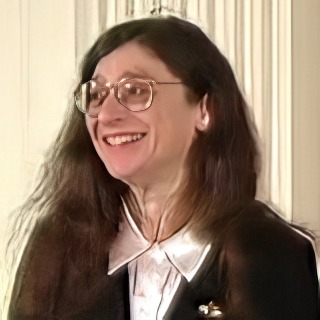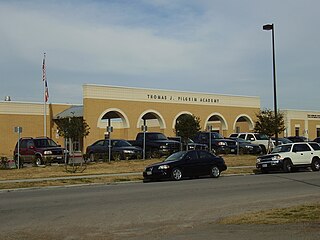Related Research Articles

Entomology is the scientific study of insects, a branch of zoology. In the past the term "insect" was vaguer, and historically the definition of entomology included the study of animals in other arthropod groups, such as arachnids, myriapods, and crustaceans. This wider meaning may still be encountered in informal use.
The Entomological Society of America (ESA) was founded in 1889 and today has more than 6,000 members, including educators, extension personnel, consultants, students, researchers, and scientists from agricultural departments, health agencies, private industries, colleges and universities, and state and federal governments. It serves the professional and scientific needs of entomologists and people in related disciplines. To facilitate communication among members, the ESA is divided into four sections based on entomological interests, and six branches, based on geographic proximity. The national office is located in Annapolis, Maryland.

Henry Tibbats Stainton was an English entomologist. He served as an editor for two popular entomology periodicals of his period.

May Roberta Berenbaum is an American entomologist whose research focuses on the chemical interactions between herbivorous insects and their host plants, and the implications of these interactions on the organization of natural communities and the evolution of species. She is a member of the National Academy of Sciences and was named editor-in-chief of its journal, Proceedings of the National Academy of Sciences in 2019; she is also a member of the American Philosophical Society (1996), and a fellow of the American Academy of Arts and Sciences (1996). She has held a Maybelle Leland Swanlund Endowed Chair in entomology since 2012, which is the highest title a professor can hold at the University of Illinois. In 2014, she was awarded the National Medal of Science.
Forensic entomology deals with the collection of arthropodic evidence and its application, and through a series of tests and previously set of rules, general admissibility of said evidence is determined. Forensic entomology may come into play in a variety of legal cases, including crime scene investigation, abuse and neglect cases, accidents, insect infestation, and food contamination.
The red ring disease of coconuts and African oil palms is caused by the nematode Bursaphelenchus cocophilus. It is also identified in literature with an alternative scientific name Rhadinaphelenchus cocophilus. The common name, the red ring nematode, is derived from its distinguishing symptom.
Peach Point Plantation was the homestead and domicile of early Texas settlers Emily Austin Perry, James Franklin Perry, William Joel Bryan Stephen F. Austin, and Guy Morrison Bryan. Peach Point Plantation is located in Jones Creek, Brazoria County, Texas, United States.

Thomas Jefferson Pilgrim started the first school in Texas. The town of Pilgrim, Texas is named for Thomas J. Pilgrim. Thomas was born to Thomas and Dorcas Pilgrim, in East Haddam, Connecticut. Thomas attended the Hamilton Literary and Theological Institute at Colgate University. In 1828, Pilgrim heard about the settlements in Texas and left school in New York to travel to Texas in the company of approximately sixty men. The pilgrimage (npi) was led by Elias R. Wightman. Pilgrim arrived at Matagorda, Texas. Soon thereafter, Pilgrim served the Austin Colony as a Spanish interpreter. Pilgrim was also a close friend of Stephen F. Austin.
The Southwestern Entomologist is a quarterly peer-reviewed scientific journal published by the Society of Southwestern Entomologists. It was established since 1976 and is a regional publication covering entomological research conducted primarily in Texas, Oklahoma, New Mexico, and Mexico. It is published in English, with optional abstracts in Spanish.
Jeffery Stuart Pettis is an American-born biologist and entomologist known for his extensive research on honeybee behavior. He is currently head of Apimondia. He was the research leader at the United States Department of Agriculture's Beltsville Bee Laboratory (BBL). His research has led to significant breakthroughs in understanding and managing CCD, a primary cause of North American bee population decline. He is also known for discovering with Dennis vanEngelsdorp, then at Pennsylvania State University, the ability of bees to detect pesticides and harmful fungi in collected pollen and subsequently quarantine the harmful substances from the rest of the hive. His research has also studied the synergistic effects of Imidacloprid on bees, an insecticide derived from nicotine which has been shown to contribute to CCD.

The Department of Entomology is a research department and collection unit of the Smithsonian Institution's National Museum of Natural History (NMNH), located in Washington, DC. The department houses the U.S. National Insect Collection, one of the largest entomological collections in the world, with over 35 million specimens housed in 132,354 drawers, 33,000 jars or vials, and 23,000 slides in more than 5,200 cabinets. The department also includes research scientists and technical staff from the Smithsonian Institution, the United States Department of Agriculture Systematic Entomology Lab (SEL) and United States Department of Defense Walter Reed Biosystematics Unit (WRBU).
Marla Spivak is an American entomologist, and Distinguished McKnight University Professor at the University of Minnesota specializing in apiculture and social insects.
Glavis Bernard Edwards Jr. is an American taxonomic entomologist specializing primarily in spiders, with broader interests in butterflies, centipedes, millipedes, and thrips. He was the Curator of Arachnida and Myriapoda for the Florida State Collection of Arthropods (FSCA), Division of Plant Industry, Florida Department of Agriculture & Consumer Services. His curatorial responsibilities included Arachnida : spiders, scorpions, harvestmen, and relatives; Crustacea : pillbugs, sowbugs; Myriapoda including centipedes, millipedes, and symphylans; Onychophora; and Thysanoptera. He has authored more than 100 scientific publications in his fields of research. He retired in August, 2015, after over 38 years of state service. He became a Curator Emeritus at the FSCA and continues his research on jumping spiders.
Melville Harrison Hatch (1898–1988) was an American entomologist who specialized in the study of beetles. His long career at the University of Washington was highlighted by the publication of the seminal, five-volume work Beetles of the Pacific Northwest. Hatch is responsible for the identification and naming of 13 species.

Annette Frances Braun (1884–1978) was an American entomologist and leading authority on microlepidoptera, kinds of moths. Her special interest was moths whose larvae live as leaf miners.
Louise M. Russell was a US Department of Agriculture entomologist renowned for her expertise in insect identification and research on using parasites for biocontrol.
The Florida Entomologist is an quarterly open access scientific journal published by BioOne on behalf of the Florida Entomological Society. Founded in 1917 as “The Florida Buggist” and in 1920 was renamed, into “The Florida Entomologist.” Manuscripts from all disciplines of entomology are accepted for consideration. The chief editor is James Nation of the University of Florida. According to the 2013 Journal Citation Reports, the impact factor of The Florida Entomologist is 0.975 which ranks it 50/94 in "Entomology".
References
- ↑ Society of Southwestern Entomologists: Historic Documents, http://sswe.tamu.edu/historic_documents.htm, accessed 14 Sep 2011.
- ↑ Society of Southwestern Entomologists: July 2009, http://sswe.tamu.edu/index.htm, accessed 14 Sep 2011.